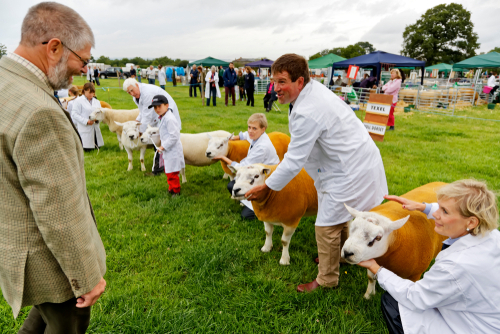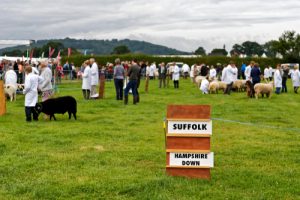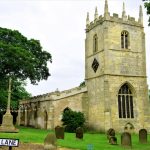
Gillingham in Brief
Gillingham is a town and civil parish in Dorset’s Blackmore Vale in southwest England. The town lies on the River Stour, approximately 5 miles (8 km) northwest of Shaftesbury, and 6 miles (10 km) east of Wincanton. It also has the distinction of being the most northerly town in Dorset, close to the county boundaries of Wiltshire and Somerset. The ancient market town has an Anglo-Saxon heritage. In the 2011 national census, the population of the parish was recorded as 11,756.
A Fleeting History
Ancient Times
A surviving ancient barrow (raised earth burial mound) in the town is evidence of the area’s Stone Age occupation. Similarly, archaeological evidence found in the area also supports the theory of Roman settlement during the 2nd and 3rd centuries. However, the settlement of Gillingham itself did not emerge until Anglo-Saxon times. The parish church, St Mary the Virgin, houses the shaft of a 9th-century Saxon cross.
The town’s name ‘Gillingham’ is derived from its Anglo-Saxon heritage, translating as “the homestead of Gylla”. The spelling of the town’s name in a 10th-century charter was consistent with that of today. However, by the time of the Domesday Book (1086) its name was spelled ‘Gelingham.’ Later spellings included ‘Gellingeham’ in 1130, ‘Gyllingeham’ in 1152, and ‘Gilingeham’ in 1209.
The Middle Ages
At the beginning of the 12th century, King Henry I established a royal hunting lodge at Gillingham. King Henry II, John, and Henry III, all enjoyed the use of the lodge while hunting in the nearby royal forest. However, the lodge gradually fell into disrepair and was demolished on the order of Edward III in 1369. The gradual clearance of the royal forest had begun as early as the 13th century. By the mid-16th century, its deforestation was a fait accompli.
In October 1348, there was a major outbreak of the black death in the town. In the following four months, the disease killed around 50 percent or about 1000 of the town’s population. The event was obviously a major setback to the town’s prosperity. On the upside, Gillingham did see the building of St Mary’s church during the 14th century. Though, apart from the original chancel, today’s church mostly dates from the 18th and 19th centuries. By the 15th century, Gillingham had developed into North Dorst’s most important agricultural centre.
Tudor Times to WW2
In 1516, the county’s first grammar school was established in Gillingham. Tudor times also saw a number of houses built in the town. And, though a huge fire swept the town in 1694, many of the town’s Tudor buildings survived. In 1769, Gillingham saw the first silk mill established in the town.
In 1823, visitor John Constable put Gillingham very firmly on the map when he decided to paint the town bridge. The work, entitled ‘Gillingham Bridge, Dorset’ hangs in the Tate Britain Gallery in London. Constable, a friend of local vicar John Fisher went on to paint several other local scenes around Gillingham.
In May 1859, the Salisbury and Yeovil Railway (S&YR) opened, which saw a train station established at Gillingham. The arrival of the railway brought new investment and prosperity to the town. Industries such as brewing, brick making, cheese making, flour production, printing, and soap manufacturing all thrived during the Victorian era.
During World War Two, Gillingham’s strategic rail link to London meant it prove a popular destination for evacuees from the capital. The post-war need for housing across the country saw the town expand rapidly. In 1951, the parish population was just 3,352, a rise of only around 350 from the previous 60 years. However, by 2001, it had grown to 9,340. The hamlets of Peacemarsh, Bay, and Wyke, were swallowed up in the urban development to become part of Gillingham.
The Modern Era
The town has around 70 retail outlets as well as two large commercial areas, i.e. the Brickfields Business Park and the Brickfields Industrial Estate. Additionally, Gillingham’s traditional monthly street market, known as the ‘White Hart Market’ is held on the second Sunday of each month.
The annual Gillingham & Shaftesbury Show is the main event on the town’s calendar. The 2-day agricultural show is held every August at the showground on the outskirts of town. The town also plays host to a week-long Walking Festival usually held in early September.

The Gillingham & Shaftesbury Agricultual Show is the largest event in the town’s calander.
Getting to Gillingham
Road
Gillingham has good connectivity to the national road network. It’s only 4 miles (6 km) south of the A303, the main road from London to South West England. The road distance from London to Gillingham is approximately 110 miles (176 km).
Rail
Gillingham railway station is a stop on the London to Exeter ‘West of England’ mainline. The rail journey from London’s Waterloo takes about 2 hours.
Air
The nearest airport to Gillingham is Bournemouth (BOH), which is about 34 miles away. The journey is likely to take well over 2 hours by public transport. An alternative is to take a train from London Heathrow (LHR) to Gillingham, via London, which takes about 3 hours.
Things to see and do!
Love Museums?
Gillingham Museum tells the history and story of the town and the surrounding area. Exhibitions range from prehistoric times through to the Roman occupation, and from Medieval times, to the Victorian era. The museum also displays works of local scenes by famed landscape artist John Constable.
Gold Hill Museum is 4 miles away in Shaftsbury. It’s located at the top of Gold Hill which is famous as the location for the ‘Hovis’ adverts of the 1970s and 1980s. Displays of local artefacts are spread over two floors.
Old Buildings with Gardens
Set on a plateau of high ground Stourhead House is an 18th-century Palladian country mansion set in a magnificent landscape garden. The house was home to generations of the locally influential Hoare family. The famed house and gardens are around 5 miles from Gillingham.
Shaftesbury Abbey Museum & Garden features a ruin, a walled garden, a medieval orchard, and a large herb garden. Founded in 888 by Alfred the Great, Shaftesbury Abbey was Britain’s first Benedictine nunnery. There’s an interactive virtual tour, a free audio tour, and a children’s trail with activities. The site is less than 4 miles from Gillingham.
Calling the Shots
If you’ve ever fancied shooting a few pigeons then the ‘AA Shooting School’ is the place for you. The school aims to give everyone the chance to experience the thrilling sport of clay pigeon shooting. It caters to individuals, corporate groups, and families, all in a safe environment with a qualified instructor. All equipment is provided and there’s no requirement for a gun license. The school is 9 miles south of Gillingham at Sturminster Newton.
Fancy trying another kind of shooting? ‘Light and Land’ is a landscape photography tour company, based in Gillingham. The company offers classes and workshops run by some of the UK’s best landscape photographers. It also runs photography tours both in the UK and abroad.
Hiking and Biking
There are miles and miles of footpaths, bridleways, and cycleways around North Dorset. If you fancy doing a bit of biking there are plenty of options to hire a bike locally. The 73 miles long North Dorset cycleway passes through Gillingham and traverses the Blackmore Vale, along the banks of the River Stour. Well-known hiking routes that pass through or are close to Gillingham include; The Great Wessex Way, The Hardy Way, The Gillingham Walking Trial, The Stour Valley Way, and the White Hart Link.
Sport
Gillingham Town FC is a non-league team that plays its football in the Western League Division One. Nicknamed ‘The Gills’, the club plays home games at Woodwater Lane.
North Dorset RFC is a rugby union club that is based in Gillingham. The club plays its rugby in the Southern Counties South League. Home games are played at Slaughtergate.
Where to Stay?
With its direct train link to London, Gillingham makes a great base for exploring the North Dorset area. You’ll find a decent selection of hotels, B&Bs, and self-catering cottages right in the middle of town. There are more options just out of town. where it’s possible to find farm stays, wooden lodges, and stone cottages. Additionally, there is plenty of good-quality camping and caravan sites. If you don’t fancy any of the above, why not stay in a country inn or guesthouse?
Moving to Gillingham?
Over the last year (July 2021), properties in Gillingham have sold for an overall average price of £246,300. The majority of those sales were for detached properties, which sold for an average price of £319,800. Semi-detached properties sold for an average of £217,600, while terraced properties fetched £204,700. The last year has seen average sold property prices in Gillingham 5% up on the previous year.
Looking for a Staycation?
Are you thinking of holidaying in the UK anytime in the near future? If so, why not check out some of our other travel guides for some staycation ideas? I think you’ll be surprised at the variety of great things to do in the UK’s fairly green and mostly pleasant land.
Photo credits: Andrew Harker/Shutterstock.com

